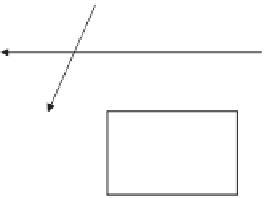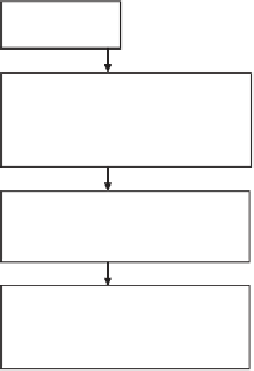Agriculture Reference
In-Depth Information
FEEDS
MOISTURE
DRY MATTER
ASH
ORGANIC MATTER
MACRO &
TRACE
MINERALS
CARBOHYDRATES,
CRUDE FIBER &
NITROGEN FREE EXTRACT
NITROGENOUS
COMPOUNDS,
CRUDE PROTEIN
LIPIDS or FATS,
ETHER
EXTRACT
PROTEINS;
AMINO ACIDS,
NONPROTEIN
NITROGEN,
UREA, AMINES,
FATTY ACIDS;
NEUTRAL FATS;
VITAMINS,
A, D, E, K
STRUCTURAL;
CELLULOSE &
HEMICELLULOSE
NON-
STRUCTURAL;
STARCHES &
SUGARS
CELL WALL
CELL SOLUBLES
NEUTRAL DETERGENT FIBER;
CELLULOSE,
HEMICELLULOSE,
LIGNIN, CUTIN, SILICA, etc.
DEGRADABLE
INTAKE
PROTEIN
NON-
DEGRADABLE
INTAKE
PROTEIN
ACID DETERGENT FIBER;
CELLULOSE,
LIGNIN, etc.
ACID DETERGENT
LIGNIN (ADL);
LIGNIN, ACID INSOLUBLE ASH
Figure 10.1
Analytical scheme
for determining nutrient
content of feeds.
established. Forage preference is positively correlated
with organic matter digestibility of the individual forage
whereas it is negatively related to the fi ber characteristics
(NDF, ADF, ADL). When dry matter (DM) is less than
10-12%, low forage DM may limit intake.
Amount of refused feed also will alter intake of forage
by goats. Goats will eat more forage (depending on type
of forage) when the allowed refusal is larger because they
have greater selection opportunity. Mixed fresh forage
along with dry forage usually is preferred over a single
forage, but performance will vary with feeding value of
the forage.
fermentation and improves animal performance. Dry
forage include hays, pelleted forage, and by-products like
straw and seed hulls. Feeding a higher quality hay also
allows diet formulators to reduce the protein content of the
grain mix fed and thereby to reduce the cost of the grain
mix. Factors that infl uence the quality of hay include date
of the harvest, leafi ness, lack of seed heads, absence of
coarse stems, lack of foreign material, and green color.
Hay intake will vary depending on the plant species and
maturity stage. With roughage-based diets, hay intake is
related inversely to its fi ber content, and fi ber content
increases as plants mature. Grass hay usually is of lower
quality and feeding value than legume hay. Although goats
prefer long hay, feed intake is increased when hay is pel-
leted and chopped. Intake of pelleted and dehydrated
forage will be similar to intake of good quality hay.
D
RY
F
ORAGE
Adding dry forage to high-concentrate diets will increase
rumen-buffering capacity that in turn optimizes rumen






















